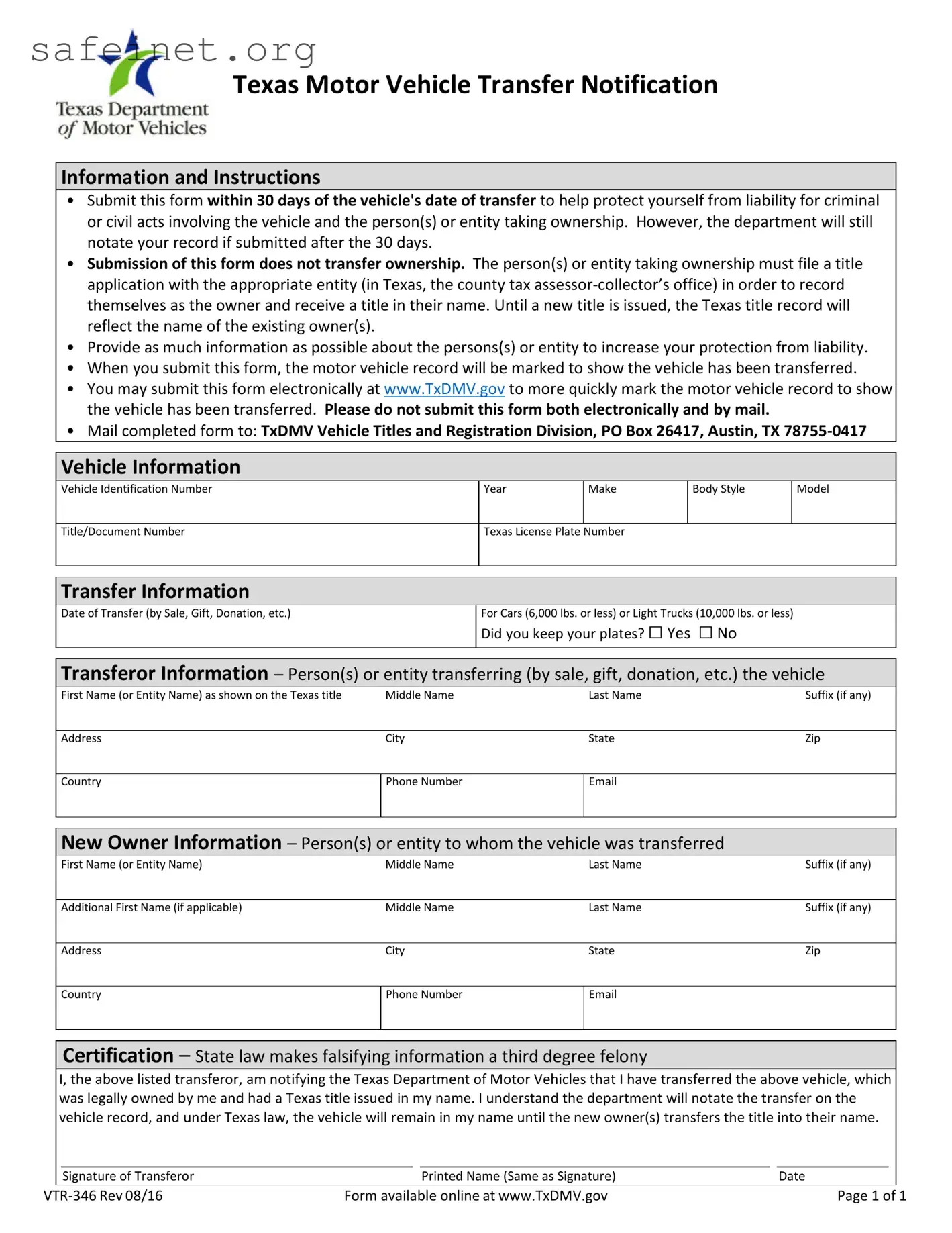The BOS VTR-346 form serves as a crucial document in the process of transferring ownership of vehicles in Texas. Similarly, the Certificate of Title (Form 130-U) is used when individuals buy or sell vehicles. This certificate is vital for proving ownership. When a vehicle is bought, the seller signs the title over to the buyer, who then submits this document to their local Department of Motor Vehicles (DMV) to officially register the vehicle in their name. Both forms require information about the vehicle, such as its identification number and details about the transaction, ensuring that the transfer of ownership is recorded accurately.
Another document that resembles the BOS VTR-346 is the Vehicle Registration Application (Form VTR-101). This document is essential when registering a newly acquired vehicle. While the BOS VTR-346 focuses specifically on the transfer of ownership, the Vehicle Registration Application includes not only ownership details but also addresses how the vehicle will be used on public roads. To complete this application, individuals often reference the information found on the BOS VTR-346, reinforcing the relationship between the two forms in the vehicle registration process.
The Bill of Sale is another similar document. Though not specific to vehicle transfers, a Bill of Sale captures the details of the sale between the buyer and the seller. Like the BOS VTR-346, it includes the identities of both parties, the vehicle's details, and the agreed-upon price. This document may serve as proof of the transaction when applying for a title or during disputes over ownership, highlighting the essential role both documents play in protecting the rights of buyers and sellers alike.
The Application for a Duplicate Title (Form VTR-346) is also comparable. This form is used when an individual loses their vehicle title and seeks a replacement. In comparison, the BOS VTR-346 relates directly to the transfer of ownership; however, both require similar identifying information about the vehicle. Individuals often fill out the Application for a Duplicate Title to streamline the process when they have misplaced the original title, ensuring that their ownership documentation is up-to-date.
The Report of Sale is similar in that it must be filed when a vehicle is sold. This document, often submitted to a local DMV, informs the state that the vehicle has changed hands. While the BOS VTR-346 facilitates the actual transfer of ownership between the parties, the Report of Sale primarily serves as a notification to government authorities. Both documents contribute to a clear and legal representation of vehicle ownership transactions, highlighting their importance in maintaining accurate records.
Lastly, the Odometer Disclosure Statement is relevant in conjunction with the BOS VTR-346. This document is required during the sale of a vehicle to disclose the current mileage. Accurate odometer readings help prevent fraud by ensuring buyers are aware of the vehicle's usage history. While the BOS VTR-346 records the transfer of ownership, the Odometer Disclosure Statement serves a specific purpose, ensuring transparency and honesty during the sale process, thus safeguarding both parties involved in the transaction.

